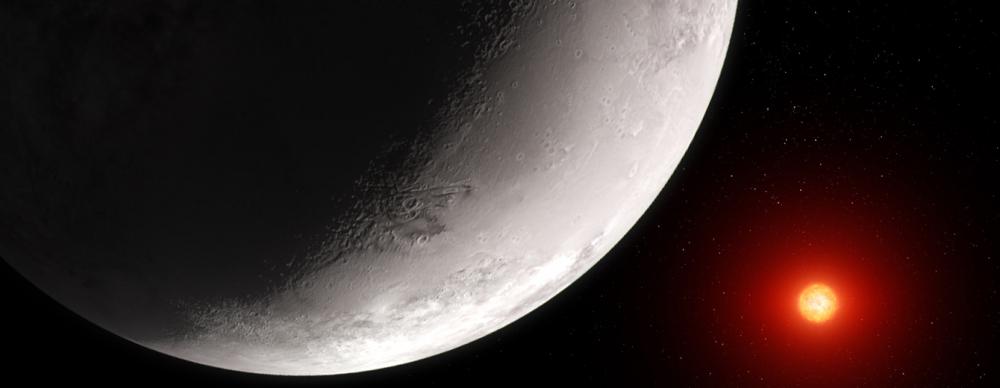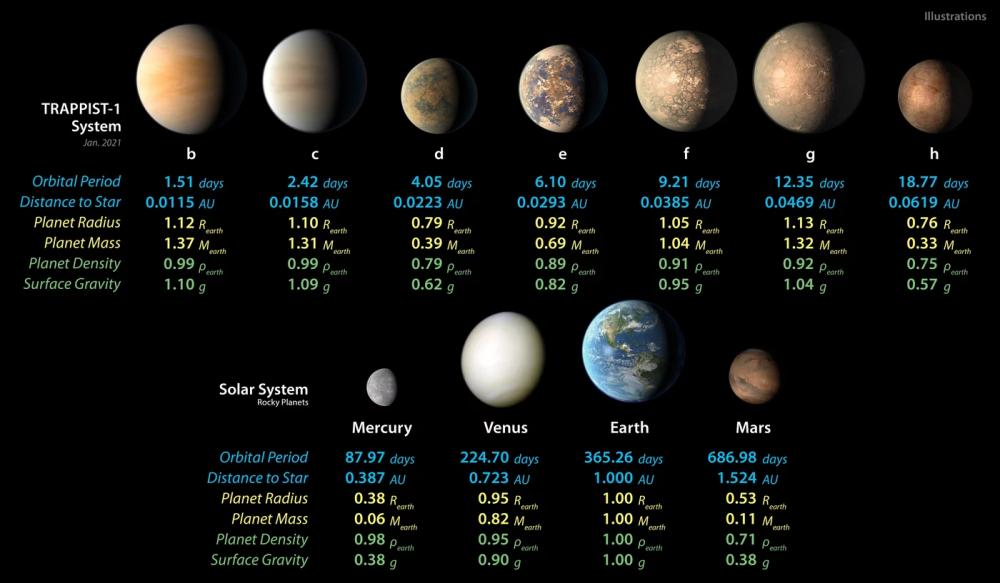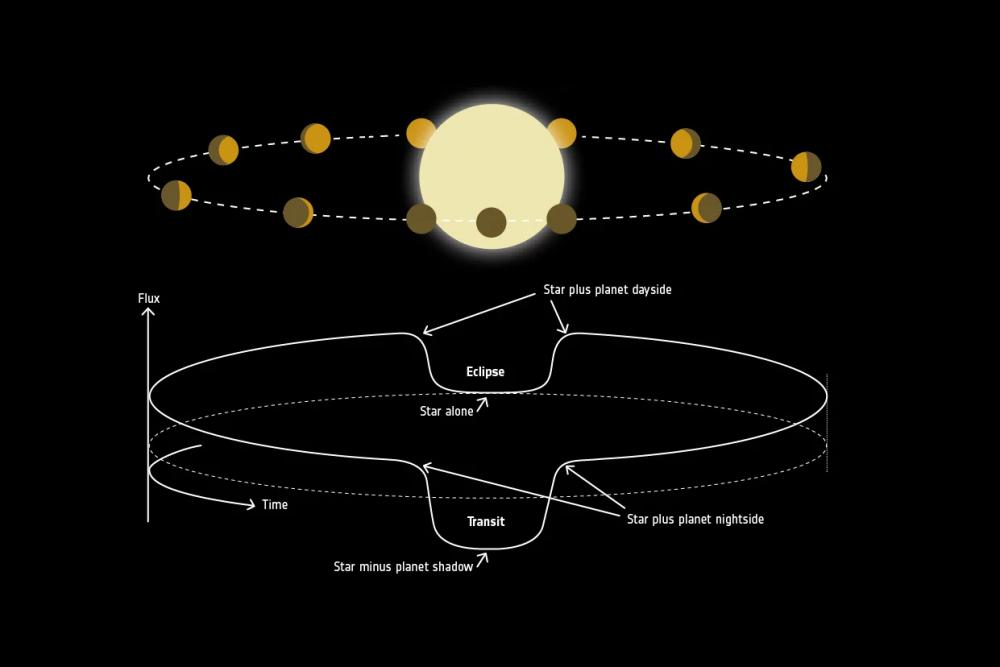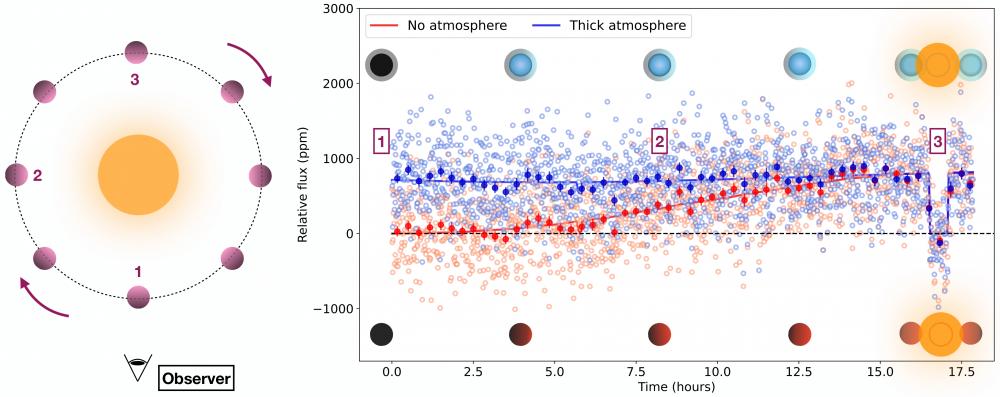
Figure 1 - artistic view of the rocky exoplanet rocheuse TRAPPIST-1 c
Credits : NASA, ESA, CSA, Joseph Olmsted (STScI)
Using the James Webb Space Telescope, a group of astronomers led by MPIA, in collaboration with a team from the Astrophysics Department of CEA Paris-Saclay, searched for an atmosphere on the rocky exoplanet TRAPPIST-1 c. Although the planet is almost identical to Venus in terms of size and mass, its atmosphere turned out to be very different. By analyzing the heat emitted by the planet, they concluded that it may have only a tenuous atmosphere containing a minimum of carbon dioxide. However, this is also consistent with a barren rocky planet devoid of any significant atmosphere. This work gives us a better understanding of how the atmospheres of rocky planets orbiting low-mass stars can withstand strong stellar winds and intense UV radiation.
The results are presented in the journal Nature:
Low-mass stars can erode planetary atmospheres
"The nearby TRAPPIST-1 planetary system is currently the best candidate for studying the atmospheres of rocky Earth-like planets orbiting a red dwarf," explains Sebastian Zieba, a PhD researcher at the Max Planck Institute for Astronomy in Heidelberg, Germany. He is the lead author of a paper to be published in the journal Nature.
Astronomers have long suspected TRAPPIST-1 c, the second planet in the 7-planet system, to be a Venus analogue (see Figure 1). Like Venus, the diameter and mass of TRAPPIST-1 c are close to those of the Earth, and the radiation it receives from its star is almost identical to that of Venus. However, although relatively cool on the outside, many stars of this type exhibit strong stellar winds and intense UV radiation for a long period of their lives, potentially damaging and eroding the atmospheres of their planets.
"We wanted to find out whether TRAPPIST-1 c had escaped this fate and was able to retain a substantial atmosphere, or even be similar to the planet Venus in the solar system," explains S. Zieba.
Nevertheless, being more massive than the Earth, its gravitational attraction to its surface is greater, which should contribute to the preservation of its atmosphere despite the conditions.

Figure 2 - Detailed measurements of the physical properties of the seven rocky TRAPPIST-1 planets (top - artist's illustration) and the four terrestrial planets in our solar system (bottom) are helping scientists find similarities and differences between the two families of planets.
Credit: NASA/JPL

Figure 3 - This image illustrates a planet's phase curve, i.e. the variation in overall brightness of the star-planet system during the planet's revolution. In the case of a planet that is gravitationally locked by tidal forces, its day side, i.e. the side illuminated and heated by the star, is only visible just before and after it passes behind the star (eclipse).
Credit: ESA
Temperature: a complicated measurement, even for the JWST
TRAPPIST-1 c is tidally-locked, always facing its central star with the same side. This leads to two distinct hemispheres - one in constant day, and another in eternal night. The planet’s rotation is locked to its trajectory around the star, and as a result, both a day and a year last approximately 2.42 Earth-days on TRAPPIST-1 c. In addition, its orbit is oriented in such a way that from our perspective it repeatedly passes in front of its star (see Figure 2). This allows us to observe the planet during a transit (when the planet passes in front of its star) and just before and after an eclipse (when the planet passes behind its star). The latter position enables us to observe the illuminated side of the planet, and thus measure its thermal emission and the characteristics of its surrounding atmosphere.
Characterizing the atmosphere of rocky planets the size of Earth is a difficult task due to the planet's low luminosity relative to that of the star, even for the James Webb Space Telescope (JWST). For this reason, the team combined the observation of four eclipses of TRAPPIST-1 c to increase the signal-to-noise ratio. They used the MIRI instrument, whose mid-infrared vision is perfectly suited to detecting the star's thermal emission. The filter used was centered at 15 µm, corresponding to a wavelength characteristic of the CO2 absorption band.
This is the same method used by another team of researchers, including astronomers from CEA Paris-Saclay, to determine that TRAPPIST-1 b, the closest planet in the system, probably has no atmosphere.
TRAPPIST-1 c could have a thin atmosphere
Astronomers have combined JWST observations with model calculations to find the most likely values of atmospheric properties corresponding to the data. The pressure and composition of an atmosphere determine a planet's temperature in relation to the light it receives from its star. Conversely, temperature determines the amount of infrared light emitted by the planet. What's more, a substantial atmosphere, whatever its composition, redistributes heat from the day side to the night side, so that the temperature on the day side is lower than it would be without an atmosphere (see Figure 3). Thus, infrared measurements combined with models provide clues about the atmosphere and its composition.
Contrary to astronomers' expectations, temperatures "only" reach 110°C, i.e. 390°C lower than on Venus. The infrared light emitted by TRAPPIST-1 c does not correspond to a Venusian atmosphere, which is rich in carbon dioxide, causing a strong greenhouse effect.
"We can definitely rule out a thick, Venus-like atmosphere," says Laura Kreidberg, chief scientist of the JWST observing program, co-author and director of MPIA.
Does TRAPPIST-1 c at least have a thin gaseous envelope? To explore this possibility, scientists calculated the statistical probability of a set of atmospheric parameters matching the observations. The atmospheric model includes a range of surface pressures and mixtures of an oxygen (O2)-dominated atmosphere with varying traces of carbon dioxide (CO2). Indeed, astronomers believe that planets like TRAPPIST-1 c must have had an atmosphere containing carbon dioxide and water vapor at the start of their evolution. Over time, stellar radiation breaks down water molecules into hydrogen and oxygen. While the highly volatile hydrogen gradually escapes into space, the heavier oxygen molecules remain, resulting in an oxygen-rich atmosphere with traces of carbon dioxide.
Although these initial measurements do not provide definitive information on the nature of TRAPPIST-1 c, they do help to narrow down the possibilities.
"Our results are consistent with the planet either being a bare rock with no atmosphere, or having a very thin CO2 atmosphere (thinner than Earth's or even Mars') with no clouds," said Zieba. "If the planet had a thick CO2 atmosphere, we would have observed a very shallow secondary eclipse, if any at all. Indeed, the CO2 would have absorbed all the 15-micron light, so we would have detected none from the planet."
This result suggests that sufficiently heavy rocky planets around cold, low-mass stars could maintain an atmosphere for a significant fraction of the stellar lifetime, since the TRAPPIST-1 star is at least as old as the Sun.
"In the case of TRAPPIST-1 b, the temperature measured at 15 microns was consistent with a planet devoid of atmosphere (Greene et al. 2023), but here with TRAPPIST-1 c, the measurement leads us to hope for the presence of a fine atmosphere composed of a mixture of oxygen and carbon", enthuses Elsa Ducrot, researcher at CEA Paris-Saclay and third author of the paper.

Figure 3 –Left: Illustration of a planet's phase curve. Right: Simulations of TRAPPIST-1 b's partial phase curve as it would look with the JWST in the case of a planet with no atmosphere (red) and one with a thick atmosphere (blue).
Measuring the thermal phase curve of an exoplanet is a powerful method for confirming the presence of an atmosphere, since by redistributing heat at the surface, we would measure a constant temperature.
Credit: Elsa Ducrot
Next steps
"Observations of the thin atmospheres of rocky planets are pushing the JWST to its limits," admits Kreidberg. The signals measured are weak and many properties are still unknown, leading to uncertainties.
Further JWST observations are therefore needed to distinguish a barren rocky planet from one with a tenuous atmosphere. By measuring the light emitted by TRAPPIST-1 c over a wide range of wavelengths, astronomers can detect small absorption signatures of the gases present in the atmosphere.
"Luckily, we have obtained observing time on JWST to measure the combined phase curve of TRAPPIST-1 b and c. This should enable us to identify more definitively whether one (or both!) of the two planets has an atmosphere", says Elsa Ducrot.
Contacts DAp: Elsa Ducrot, Pierre-Olivier Lagage
• Structure and evolution of the Universe › Planets, star's formation and dynamics, interstellar medium
• Department of Astrophysics (DAp) // UMR AIM
• Dynamics of Stars, Exoplanets and their Environment
• JWST



